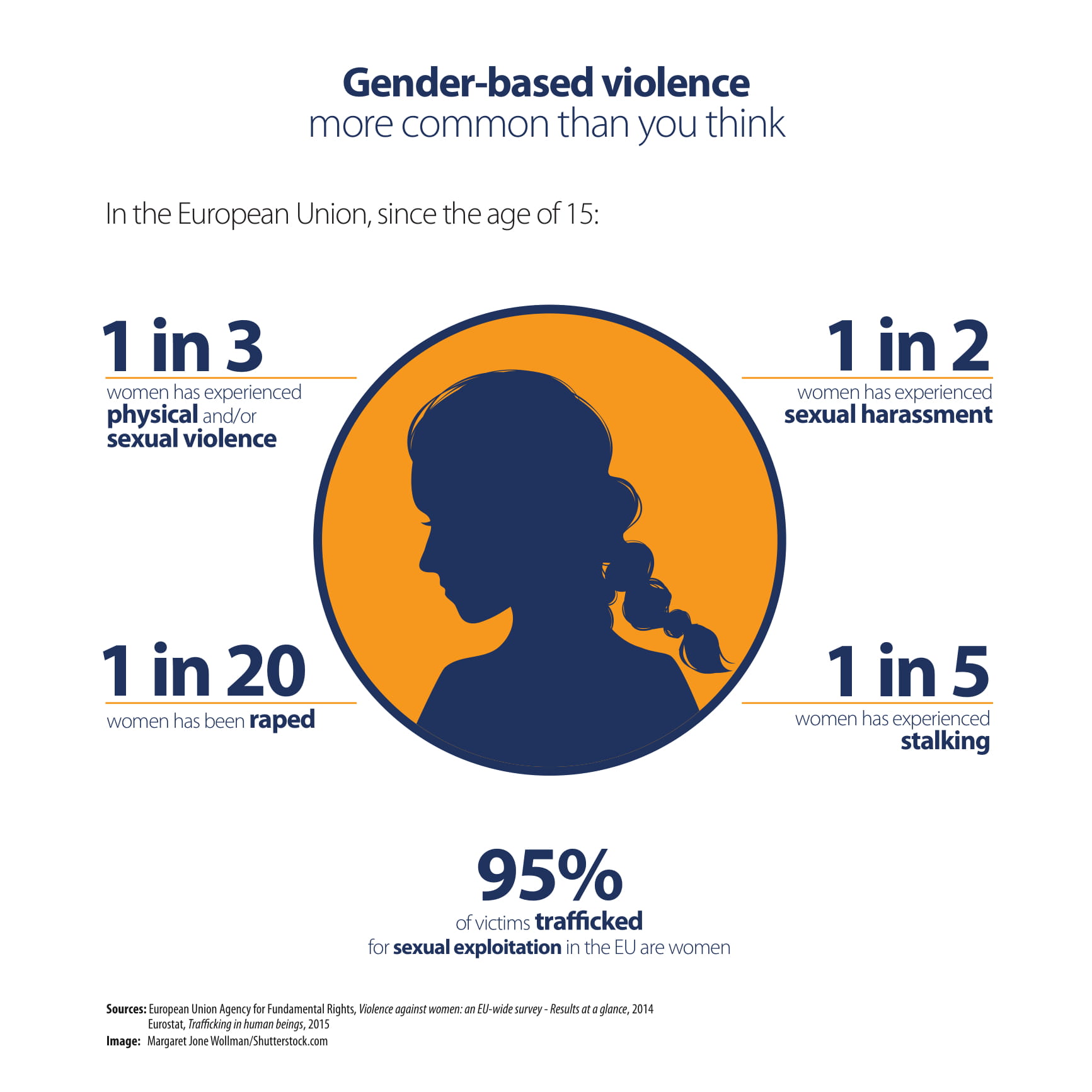Gender-based violence is a phenomenon deeply rooted in gender inequality, and continues to be one of the most notable human rights violations within all societies. Gender-based violence is violence directed against a person because of their gender. Both women and men experience gender-based violence but the majority of victims are women and girls.
Gender-based violence and violence against women are terms that are often used interchangeably as it has been widely acknowledged that most gender-based violence is inflicted on women and girls, by men. However, using the ‘gender-based’ aspect is important as it highlights the fact that many forms of violence against women are rooted in power inequalities between women and men. The terms are used interchangeably throughout EIGE’s work, reflecting the disproportionate number of these particular crimes against women.
What forms of gender-based violence are there?
The Istanbul Convention (Council of Europe, Convention on preventing and combating violence against women and domestic violence), as the benchmark for international legislation on tackling gender-based violence, frames gender-based violence and violence against women as a gendered act which is ‘a violation of human rights and a form of discrimination against women’. Under the Istanbul Convention acts of gender-based violence are emphasised as resulting in ‘physical, sexual, psychological or economic harm or suffering to women, including threats of such acts, coerican or arbitrary deprivation of liberty, whether occuring in public or in private life.’

EIGE's work on gender-based violence
Female genital mutilation in the EU
Administrative data collection on violence against women